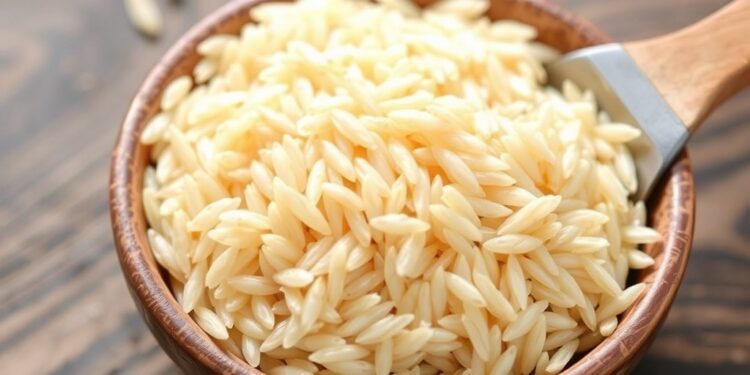Recent research from Michigan State University has uncovered a significant public health concern regarding the consumption of brown rice, particularly among U.S. populations. Many consumers often perceive brown rice as the healthier option, primarily due to its higher nutrient content and fiber compared to white rice. However, this research sheds light on a critical caveat: brown rice contains elevated levels of arsenic, a toxic element known for its detrimental health effects. This revelation begs the question of whether the health benefits associated with brown rice consumption potentially outweigh the risks posed by arsenic exposure.
Arsenic is a naturally occurring element that can accumulate in certain foods, particularly rice. The study indicated that U.S. consumers of brown rice may be exposed to higher arsenic levels than those consuming white rice. The research highlights a shocking paradox where a food often viewed as a wholesome and nutritious choice could also present a hidden danger, particularly for vulnerable populations such as children. This duality underscores the importance of not only considering nutritional value when making dietary choices but also being aware of potential contaminants.
Inorganic arsenic, the most toxic form of arsenic, was found in higher concentrations in brown rice compared to white rice among U.S. populations. Infants and children under the age of five are particularly at risk due to their relatively higher food consumption based on body weight. This elevated risk level is concerning because chronic exposure to arsenic is linked to various health issues, including developmental problems in children and increased cancer risk over a lifetime. Given these implications, it is vital for parents and caregivers to remain informed about dietary decisions involving rice consumption, especially in young children whose developing bodies are particularly susceptible to toxins.
The research indicated that while brown rice does indeed offer health benefits, such as being a good source of essential nutrients like fiber, protein, and niacin, these benefits must be carefully weighed against the risks posed by arsenic exposure. Felicia Wu, the senior investigator of the study, emphasized that the findings do not imply that brown rice is inherently unhealthy, nor should it categorically lead consumers to restructure their diets solely around white rice. Instead, this study serves as a critical reminder for consumers to remain vigilant regarding food sources in order to make informed dietary choices.
The degree of arsenic exposure varies not only between brown and white rice but also geographically. The study revealed that U.S.-grown rice exhibited considerably lower arsenic levels than rice sourced from other countries. This finding raises significant questions about the safety of imported rice and how consumers can discern the quality and safety of the rice they consume. Understanding where rice is sourced from can empower consumers to make informed choices and possibly seek out rice from reputable producers known for lower arsenic levels.
Arsenic may be found in both organic and inorganic forms, with inorganic arsenic posing greater health risks. The majority of arsenic present in rice is inorganic, particularly in brown rice, and this differentiation is highlighted in the study. With data showing that rice grown outside the U.S. presents a higher risk of inorganic arsenic content, consumers may want to consider opting for domestically grown rice when making purchases. This could serve as a practical measure to reduce potential arsenic exposure while still enjoying the beneficial nutrients present in rice.
Another significant aspect covered in the study is the disparity in arsenic exposure risks among different demographic groups. Young children, certain immigrant populations, and individuals facing food insecurity may be more susceptible to arsenic exposure due to high rice consumption or their nutritional needs. These populations may not only consume more rice relative to their body weight but may also lack the resources to select safer food options. In this context, public health messaging must be tailored to inform these vulnerable groups and help them navigate safer dietary choices.
The findings from this research prompt the need for further empirical analyses that consider the trade-offs between the benefits of brown rice consumption and the associated health risks. Policy changes may be necessary to ensure that food safety regulations address the risks of arsenic exposure comprehensively. The FDA’s forthcoming Closer to Zero initiative aims to establish action levels for arsenic in various food products, reflecting a growing awareness of the toxic nature of arsenic in the food supply.
In conclusion, the study presents a compelling narrative that prompts consumers to reconsider their perceptions of brown versus white rice. This complex interplay between dietary choices and food safety addresses an essential aspect of public health that requires ongoing research and consumer education. As the food landscape evolves, it becomes increasingly critical for individuals to remain aware of both nutritional benefits and potential hazards associated with their food choices. By doing so, they can make informed decisions that align with their health goals while minimizing exposure to harmful substances such as arsenic.
Understanding that choices around food are nuanced, the need for comprehensive research is paramount. Future studies should continue to explore the balance of nutrition, possible contaminants, and the public health implications surrounding dietary choices involving rice. As consumers strive for healthier diets, ongoing vigilance and scientific investigation will be essential in navigating these complex issues effectively.
Subject of Research: Arsenic levels in brown rice compared to white rice
Article Title: Arsenic content and exposure in brown rice compared to white rice in the United States
News Publication Date: April 9, 2025
Web References: MSUToday
References: DOI: 10.1111/risa.70008
Image Credits: Not available
Keywords: arsenic, brown rice, white rice, U.S. health, nutrition, food safety, public health, dietary choices, rice consumption, toxic elements




